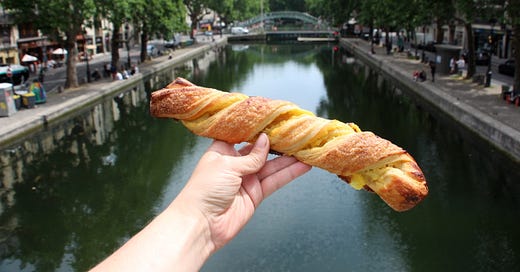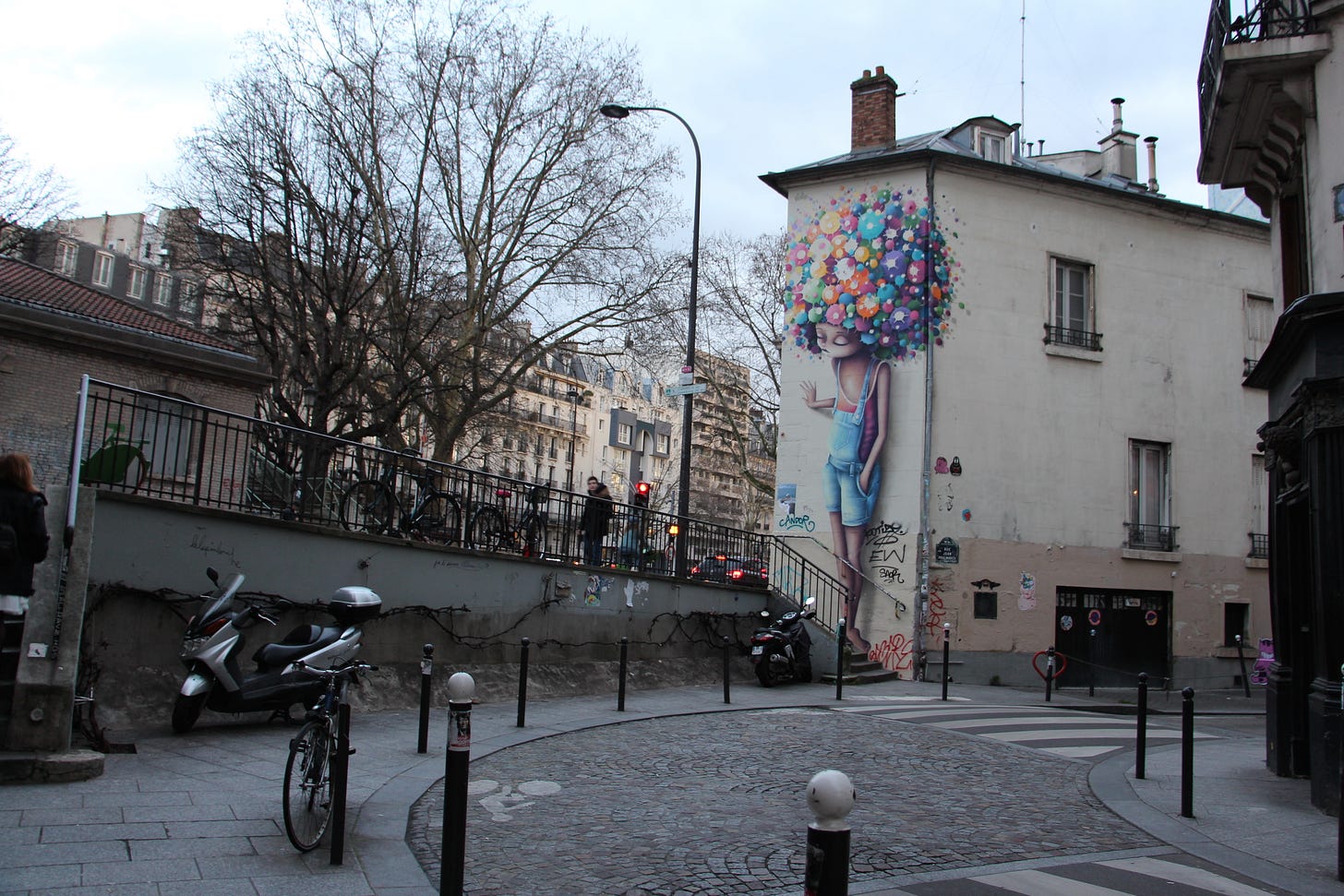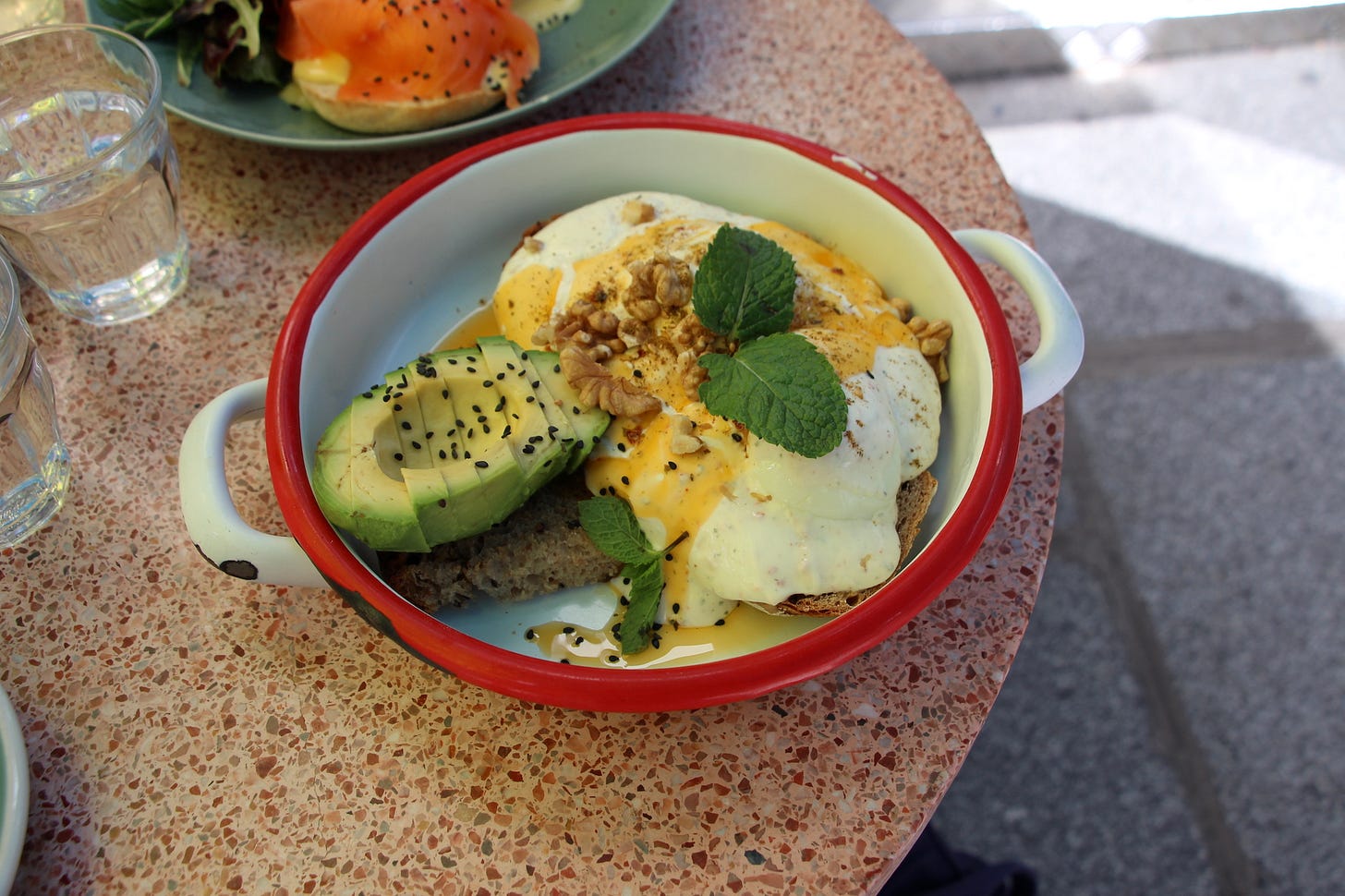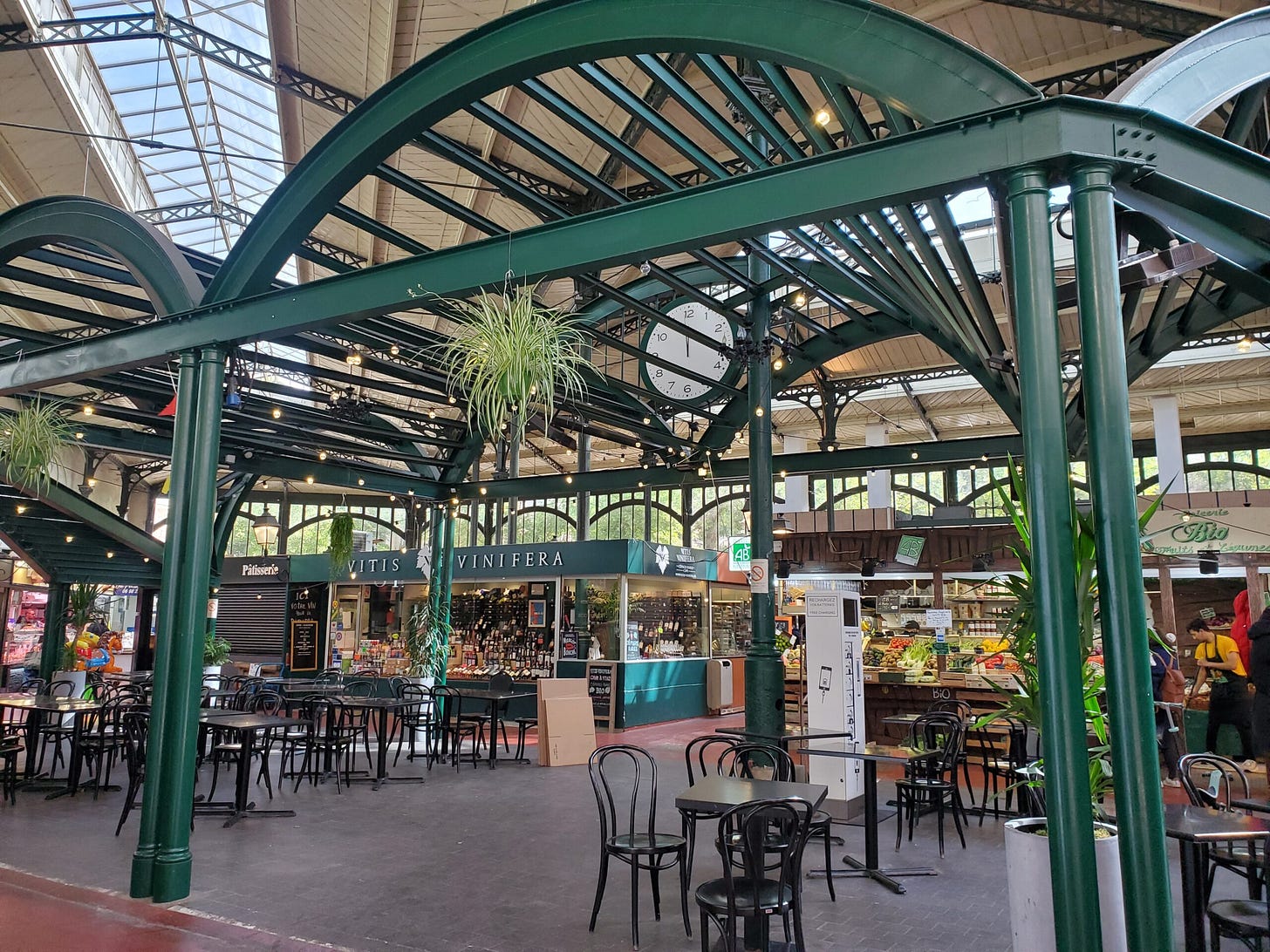As compared to other European capitals like London or Rome, Paris is actually relatively well-contained and pretty walkable. And while the streets definitely don't run in straight lines (much to the horror of this native New Yorker), it’s relatively easy to see where you're going thanks to the system of arrondissements or districts, numbered 1 to 20, which spiral out in a snail shell shape from the first in the center to the 20th in the northeast.
After eighteen years here, one of my favorite activities is to explore unfamiliar corners of Paris, getting to know the personality and unique offerings of each of the arrondissements. And this gave me the idea for a new series exclusively for my subscribers: my hit list, if you will, of the must-dos (and must-eats) in each of Paris’ 20 districts.
We’ve already ventured through the 1st arrondissement, home to the Louvre, and the 2nd arrondissement, Paris’ smallest. We’ve delved into the 3rd arrondissement, aka most of the Marais, as well as the islands that encompass much of the 4th arrondissement. We wended our way through the 5th arrondissement, Paris’ oldest, and through the 6th arrondissement, long beloved by literary legends. We paid a visit to the Eiffel Tower in the 7th arrondissement, and we soaked up the luxury in the 8th arrondissement. We dug into the delicious 9th arrondissement, and now it’s time to focus on my home. Welcome to the 10th!
The 10th Arrondissement in Short
Many arrondissements have a nickname in addition to a number, an evocation of their most famous landmark. The 1st is dubbed Louvre, the 2nd Bourse. And the 10th is no different.
Here, the major artery is the Canal Saint-Martin, which cuts the arrondissement in two. About a third of the 10th is to the east of the Canal and two thirds is to the west. The Canal isn't just a pretty face: It’s a major life hub in this arrondissement.
The 10th is a bit of a mixed bag in terms of vibe. A major transport hub home to both Gare de l’Est and Gare du Nord, the 10th is also home to two major axes – the rue du Faubourg Saint-Martin and the rue du Faubourg Saint-Denis, both of which are known for great food shops, vintage shops, lively bars, and restaurants. You’ll also find a handful of specialized theaters and Paris’ largest remaining 19th century covered market.
The vibe in the 10th is young and hip, though not nearly as hipster as the 11th to the southeast, and gorgeous street art abounds.
The eastern side of the Canal is bordered by the boulevard de la Villette dividing it from Belleville proper; to the north, boulevard de la Chapelle divides it from the 18th. To the west, boulevard du Faubourg Poissonnière separates the 10th from the 9th, while to the south, Boulevard de la Bonne Nouvelle and Boulevard Saint-Martin divide it from the 2nd and 3rd, with two majestic arches showcasing where this neighborhood once lay on the outskirts of Paris.
The Landmarks: Canal Saint-Martin, Gare du Nord, Gare de l’Est, Marché Saint-Quentin, Marché Saint-Martin, Porte Saint-Martin, Porte Saint-Denis, Hôpital Saint-Louis, Jardin Villemin
The Vibe: Trendy, village-esque, lively
My Perfect Day in the 10th Arrondissement
The perfect French day in any arrondissement begins, of course, with breakfast, and in the 10th, you've got loads of options.
To hew most closely to French tradition, my favorite formula for breakfast remains grabbing delicious viennoiseries and a stellar cup of coffee before finding a place to park and enjoy them together.
Mamiche (32, rue Château d’Eau), which I already recommended in my guide to the 9th arrondissement, also has a bakery here, where you can dig into the butter bomb of a croissant or the ultra-spiced cinnamon rolls.
Du Pain et des Idées (34 Rue Yves Toudic) is a classic best known for its behemoth of a pistachio-chocolate roll, though my favorite thing to get here is a bit more of an underdog: the sacristain, made with croissant dough twisted around pastry cream.
These viennoiseries are a little bit pricier than others, but if you ask me, they're worth it. (And they also have on-site tables and organic coffee!)
That said, my favorite place for viennoiseries in the 10th is undoubtedly Sain Boulangerie (13, rue Alibert). I’ve long loved this organic bakery specialized in sourdough for its rustic loaves, but the sourdough viennoiseries – a rarity even in Paris – are the bees’ knees.
The croissant is sweetened with floral honey and is a standout, but my go-to is the seasonally-driven chausson, which may be filled with apple, apricot, rhubarb, or fig, depending on when you visit. They also have seats on-site, in case the weather isn't conducive to enjoying your breakfast outside, though bear in mind that while a coffee machine does exist here, it’s usually on strike.
Tote the viennoiseries of your choosing to grab a takeaway coffee at Ten Belles (10, rue de la Grange aux Belles), which roasts its excellent coffee just outside Paris, or Radio Days (15, rue Alibert) whose specialty coffee is roasted in Paris in collaboration with KB Coffee Roasters, then take your spoils to the Canal and plop down in the sun to enjoy!
Finally, for the first time in newsletter history, I’m actually going to recommend a brunch spot. I’m not usually a big brunch fan, especially not in Paris, where it’s far too copious and far too expensive. But the à la carte offerings at 5 Pailles (79, Rue du Faubourg Saint-Denis) are both delicious and reasonably priced, and they also have Paris’ best chai.
Once you’ve had your breakfast, it’s time for a wander along the Canal. This waterway was originally imagined by Napoleon Bonaparte when he was still First Consul, due to widespread waterborne illness in the capital. In 1802, he proposed that a canal be built linking the 16th-century Ourcq canal and the Seine at Bastille, bringing clean water to the masses. Unfortunately, from 1809 to 1815, France was frequently at war, and the plan was delayed until 1818. The canal was finally finished in 1825.
The Canal was partially covered during the Haussmannien renovation of Paris in the 1860s, but a piece of it – from rue du Faubourg du Temple to the Canal de l’Ourcq – still remains uncovered. While the Canal was almost destroyed in the ‘60s to make way for a highway, the project was abandoned in 1971.
As you walk up the Canal, you’ll take in loads of picturesque bridges, including the one where Amélie skips stones in the film of the same name. And speaking of film, the Canal was immortalized in the film Hôtel du Nord, filmed in part at the hotel of the same name in 1938. The hotel is now a restaurant, but it still boasts its beautiful façade.
(Apparently another Emily wandered along it too, but we don't talk about her here.)
Walk past the pretty Jardin Villemin and continue up the Canal until you reach the Rotonde Stalingrad, a monument built in the late 18th century that marks the end of the Canal Saint-Martin and the beginning of the Canal de l’Ourcq. This is notably where Louis XVI and Marie-Antoinette changed coaches while attempting to flee in the early days of the French Revolution. These days, it’s been converted into a cultural center.
From here, head down the rue du Faubourg Saint-Martin to Gare de l'Est, one of Paris’ six major train stations. Built in the early 19th century, the neo-classical station boasts two Art Déco entrances and a large forecourt. Wander around the front and up the steps to the left for a pretty view of the tracks, then head along to Gare du Nord, designed by Haussmann’s great rival, Prussian-born architect Jacques Hittorf, who also designed the promenade of the Champs-Elysées and Place de la Concorde. Twenty-three statues tower over the façade of Gare du Nord, sculpted by 13 of the period’s great sculptors and representing the major cities served by the station.
It’s time for lunch, and for this, I’ve got quite a few suggestions. One of my favorites? A picnic-style lunch in the largest remaining Baltard-style market in Paris – which just so happens to be where I host my regular cheese tastings and food tours.
Keep reading with a 7-day free trial
Subscribe to Emily in France to keep reading this post and get 7 days of free access to the full post archives.














